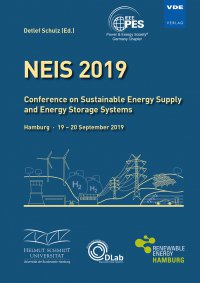Electrification Scenarios for Central and South Asia, Project CASA-1000
Conference: NEIS 2019 - Conference on Sustainable Energy Supply and Energy Storage Systems
09/19/2019 - 09/20/2019 at Hamburg, Deutschland
Proceedings: NEIS 2019
Pages: 7Language: englishTyp: PDF
Personal VDE Members are entitled to a 10% discount on this title
Authors:
Halimjanova, Munira; Darvish, Sahar; Hankers, Robert; Schulz, Detlef (Helmut Schmidt University, University of the Federal Armed Forces, Hamburg, Germany)
Abstract:
Improving voltage stability and finding an optimal technical-economical solution after connecting four Central Asian countries (Kyrgyzstan, Tajikistan, Afghanistan, Pakistan) became an essential question for all connected neighboring countries. This article describes the necessity of using Static Var Compensators (SVC) on the high voltage long lines of the example CASA-1000 project for voltage stability in the transmission grid. The voltage instability occurs in Tajik extra-high-voltage grids with long-distance transmission lines. In order to analyze these problems, official data provided by the Republic of Tajikistan has been used. Therefore, the presented simulations with the software DigSILENT Power-Factory 2017 are based on the real parameters of the Tajik energy system. The goal of this article is to determine the sources of overvoltages in the transmission grid and to propose an optimal solution for stability and minimal losses. The main focus is to find optimal locations for the Static Var Compensators to improve voltage stability due to the long transmission line between the Central Asian neighboring countries.


